UC Blogs
Think tank urges radical farm policy reforms
The American Enterprise Institute got a great deal of media coverage this week after releasing the organization’s recommendations and detailed background information relating to the reauthorization of the U.S. Farm Bill in 2012.
The institute says that farms and farm households have no more need for federal programs that subsidize incomes and risk-protection strategies than any other businesses or households. Eliminating inefficient and outdated agricultural subsidies in the Farm Bill could save U.S. taxpayers more than $100 billion over the next decade while having little impact on the country’s food supply or its farmers’ viability.
The AEI statements were packaged under a headline describing American farm subsidies as an “American Boondoggle.” One of the articles, titled Picking on the Poor: How US Agricultural Policy Hurts the Developing World, was written by the director of the UC Agricultural Issues Center Dan Sumner.
“In many ways, U.S. agricultural policy is harmful to the global poor. Farm-commodity and related subsidies reduce world prices, especially when prices are already low,” Sumner wrote. “A typical small cotton farm in Africa would have gained more than $100 per year if U.S. programs had not depressed cotton prices.”
This isn’t the first time the American Enterprise Institute has called for farm subsidy cuts, said an article in the Billings Gazette, but with a tight U.S. budget and the number of U.S. citizens with farming-related jobs down to one in 50, AEI officials said they believe they have a good chance of influencing cuts to the 2012 Farm Bill.
Other publications that picked up the story included:

Dan Sumner
Bee-ing There for the Bee-a-Thon
There are marathons, read-a-thons, dance-a-thons, quilt-a-thons, paint-a-thons, geek-a-thons and sleep-a-thons. So why not a...
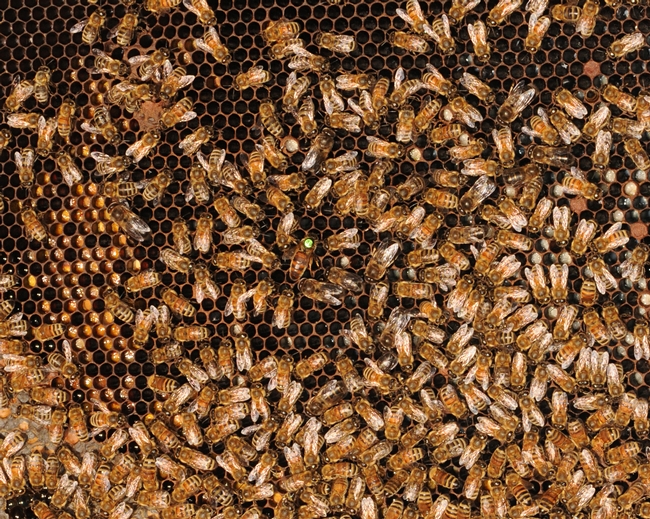
Inside the hive--every bee has a job to do. (Photo by Kathy Keatley Garvey)
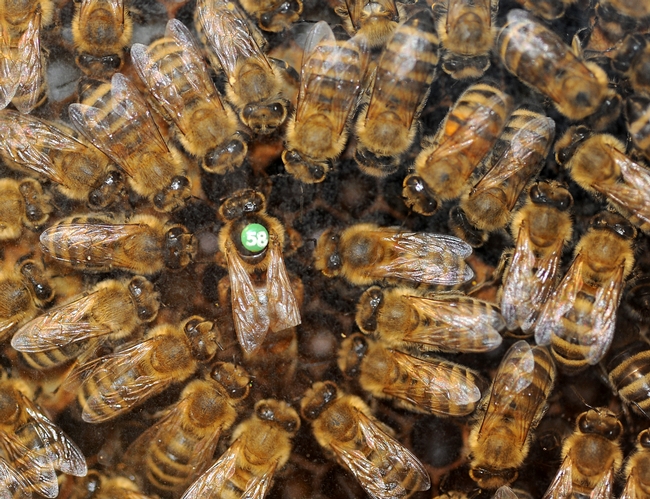
Inside the hive--the queen bee and her retinue. (Photo by Kathy Keatley Garvey)
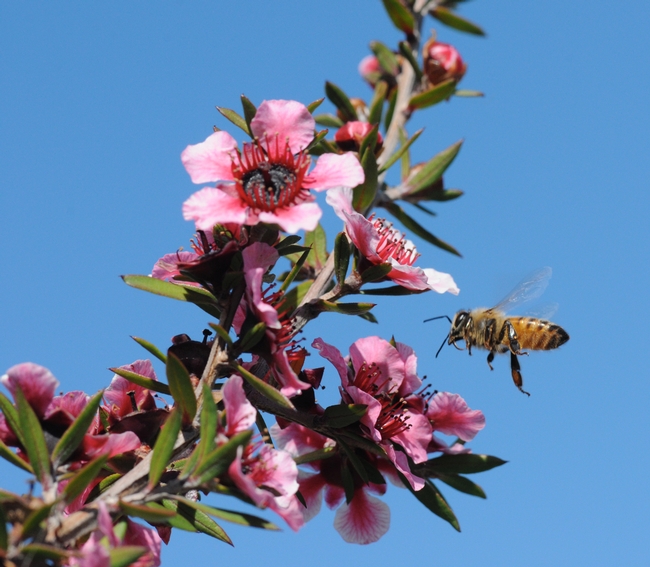
Outside the hive--worker bee heading toward a New Zealand tea tree, Leptospermum scoparium keatleyi. (Photo by Kathy Keatley Garvey)
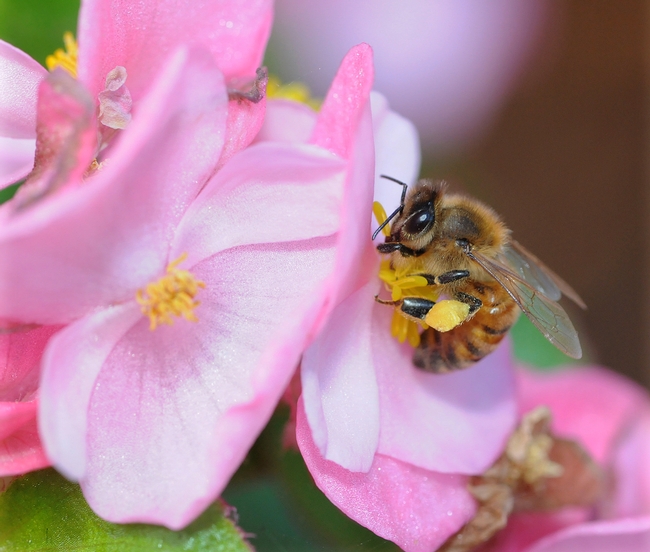
Outside the hive--a honey bee foraging on a begonia. (Photo by Kathy Keatley Garvey)
Colusa UCCE gets coverage of capitol display
When the California State Fair opens for its 18-day run tomorrow, visitors to the county exhibits will see Colusa County's all-new display, which was coordinated by UC Cooperative Extension, said an article in the Orland Press Register.
Colusa County's agriculture, tourist spots, natural resources and vital statistics are part of the interactive exhibit, said Gerry Hernandez, Colusa County UCCE research assistant and Master Gardener coordinator and project leader. The display pays tribute to the Colusa Wildlife Refuge and includes a walking path to a separate section highlighting agriculture and special events. Parents can snap photos of their kids sticking their faces through cut out holes on a painted panel featuring "Marty Mallard."
A second, smaller display, near the governor's office in the state Capitol building, also highlights Colusa County agriculture, recreation areas, forest and wildlife refuges.
"The last time it was changed was about 20 years ago," Hernandez said. "This is really more up-to-date and modern. It is really a tribute to rural living."
Photos for the displays and the picture below were taken by local photographer Sue Graue.
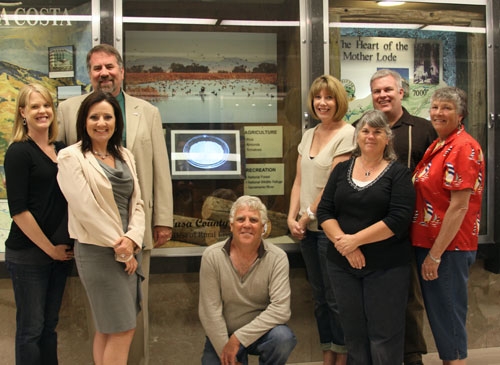
Left to right at the capitol display are Ashley Indrieri, Supervisor Kim Dolbow-Vann, Sen. Doug LaMalfa, Mike Murray, Kim Davis, Gerry Hernandez, Chris Greer and Kay Spurgeon.
A Firecracker of a Dragonfly
You can't miss the flame skimmer dragonfly (Libellula saturata). You especially can't miss the male, which is firecracker red. We watched a male...
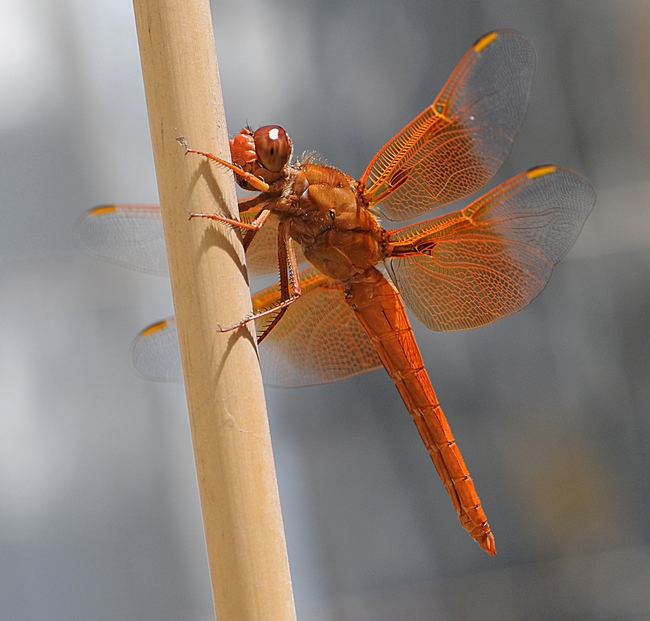
Flame skimmer (Libellula saturata) rests on a tomato stake after hunting prey over a fish pond. (Photo by Kathy Keatley Garvey)
USDA to provide $11 million for citrus greening research
The USDA will provide $11 million for scientific research to battle citrus greening disease, according to a USDA news release issued this morning. Citrus greening disease is spread by the Asian citrus psyllid, which made its way to California in 2008. When a tree acquires the disease from the pest, nutrient flow is obstructed, the fruit stays green, grows lopsided and tastes bitter.
USDA will invest $2 million this year for research at the U.S. Horticultural Research Laboratory in Ft. Pierce, Fla. The remaining $9 million will be offered in a three-year competitive grants program by the agency's National Institute of Food and Agriculture.
The news release said USDA will also establish a Citrus Disease Research and Development Advisory Committee with representatives from the grower and scientific communities. The advisory committee, which reports to U.S. agriculture secretary Tom Vilsack, will provide leadership to citrus disease scientists.
Citrus greening is one of the most devastating diseases affecting any commercial agricultural crop, according to the National Academy of Sciences. More than 250,000 jobs representing key sectors of the U.S. economy are at risk, including harvesting, packaging, processing, transportation, marketing, retail sales, and nursery production.
Citrus greening threatens to destroy over 1 million commercial citrus acres that have an annual production value of approximately $3 billion across the nation. Yearly losses could reach $10 billion if citrus greening is left unchecked.
Asian citrus psyllid was first detected in California in San Diego and Imperial counties. The pest is believed to have been introduced from northern Mexico. Adult psyllids have also been trapped in Orange, Los Angeles and Ventura counties. The University of California, California Department of Food and Agriculture, USDA and the citrus industry are working closely to quarantine the affected areas and try to eradicate the pest.
The state of Florida first detected the Asian citrus psyllid in 1998 and citrus greening disease seven years later. The pest and disease have been detected in all 30 of Florida's citrus producing counties and in Louisiana, Georgia and South Carolina. The states of Texas, Mississippi and Alabama, like California, have detected the pest but not the disease.
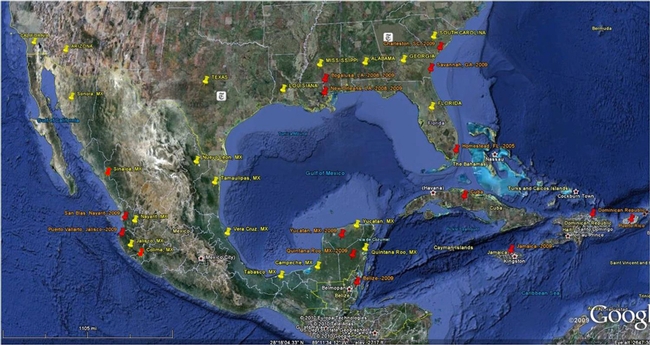
Red pins on the Texas Department of Agriculture map show where citrus greening disease has been found. Yellow pins show where Asian citrus psyllid has been found.

